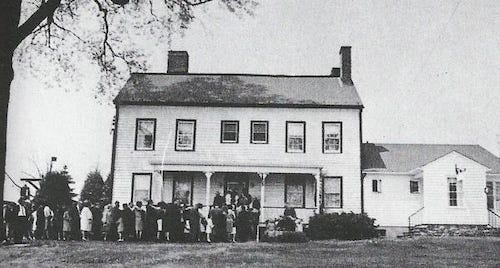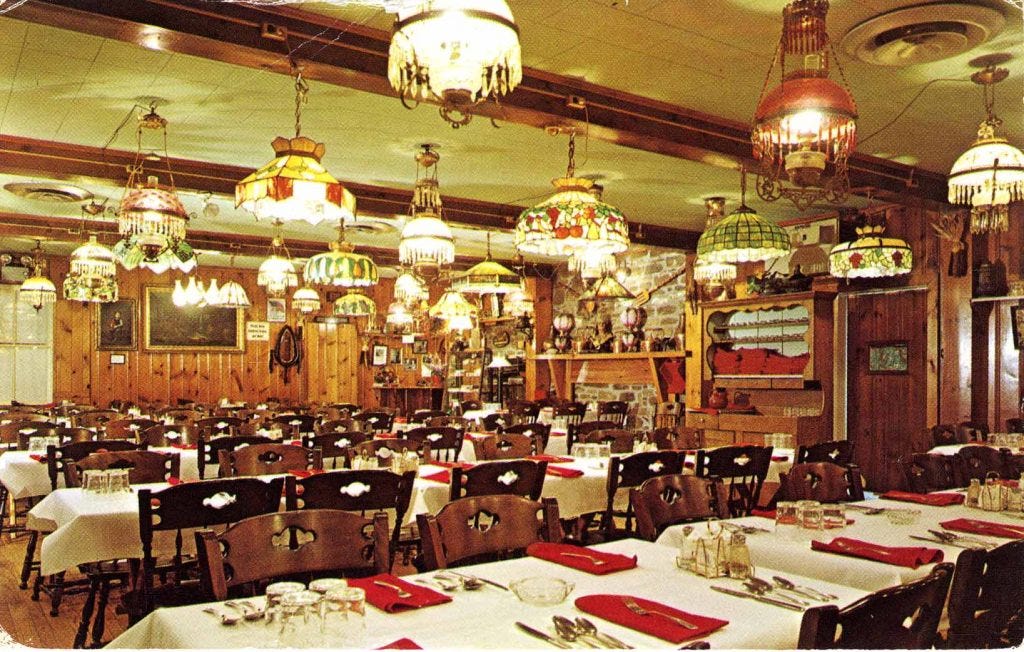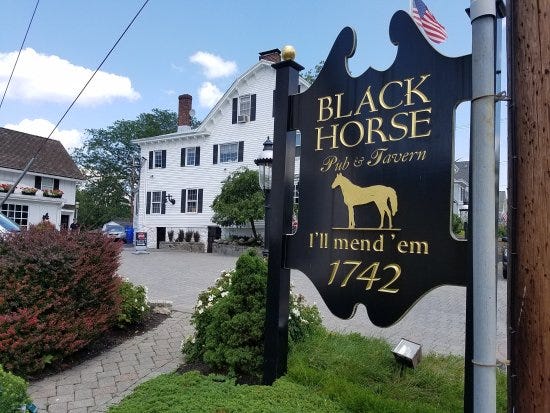Welcome to Hometown History Homework! Each week this summer we’ll be highlighing some New Jersey history that we’re reading and learning about as we gear up for Season 2 of Hometown History, NJ.
These are not intended to be fully researched, fleshed out stories like the ones you hear on Hometown History (that would take a while!) Instead, we’re simply taking you behind the scenes of what we’re doing to prepare to bring you more stellar episodes of Hometown History, NJ.
Please feel free to offer suggestions, thoughts, links and ask questions below in the comments!
How I got here:
When I first drove through downtown Chester, N.J. I didn’t notice Larison’s Turkey Farm Inn.
Sitting at the traffic light at the intersection of Rt 206 and Rt 24, I remember being pleasantly surprised that Chester had both a charming old world Main Street AND a businesses district conducive to modern day life (my husband was thrilled he wouldn’t have to drive 20 minutes to find a Starbucks).
It may have been the second or third time I traveled through Chester, passing Shop Rite and Ace Hardware and Wendy’s and CVS, that I clocked the incongruous building set back on the northwest corner - a large, white, dilapidated farmhouse with green shutters. A white sign near the bottom of the sloping overgrown yard said “Larison’s.” The rest was obscured by a “For Lease” sticker that had been slapped on the front.
“What the heck is going on there?” I thought.
This was in 2022. I didn’t know how long the property had been empty, but I figured certainly something would happen with it soon.
But nothing did.
I soon discovered there’s been a lot of discussion over what to do with Larison’s Turkey Farm. And as I passed by Larison’s one day recently I resolved to learn more about this place while I still had the chance.
The short version of the story:
The farmhouse we know as Larison’s was originally built in 1800 by a man named Isaac Corwin. Corwin arrived in Morris County from his hometown on Long Island, around the time of the American Revolution. He married his wife, Experience Reeves (Amazing name. Can we bring that one back please?) sometime between 1777 and 1779. Corwin, by then aged 42 or 43, purchased this section of farmland from its previous owner, Benjamin Luse.
According to some sources, the brick and stone rear wing of the farmhouse, including freestanding chimney, may be a remnant of an earlier house. The stones from this earlier house, thought to be Benjamin Luse’s farmhouse, may have been used to build the wall in the main dining room.
What brought Isaac Corwin from Long Island to the bosom of New Jersey? It wasn’t turkeys (although there were doubtless plenty of wild ones around). It was very likely mining. Throughout this time in New Jersey, Chester was establishing itself as an attractive place for the industry.
In 1829, the white farmhouse was purchased by iron mine owner and local cabinet maker James Topping, who used two rooms in the back wing as his workshop. Records suggest that under Topping’s ownership the farmhouse grew into a “stately home.” Topping died in 1874, and his descendants inherited the mines and continued to operate and care for the property.
Let’s fast forward to 1945. Willis Larison, a local man, was looking to move his business to a new, more highly trafficked area (he previously cooked and sold Sunday dinners at a farm on Fairmount Avenue). Larison scooped up the old Corwin/Topping property and turned the stately home into “Larison’s Turkey Farm Inn.”
What’s interesting to note is that Larison himself only ran Larison’s Turkey Farm Inn for thirty years. In 1974, the business was sold to successful local restauranteur Arthur McGreevy. McGreevy was steward of the business (which kept the name Larison’s) for the next thirty years, the time during which most locals today probably remember dining there.
Greg Caggeano, author of the blog “The Hungry Historian,” recalls eating at Larison’s with his family:
“My most striking memory of this place was located on the upstairs floor. Using the bathroom meant walking past a room enclosed in glass. Housed in that room were taxidermy animals, including a polar bear staring right at you with teeth exposed.”
A New York Times review of Larison’s from 1999 also highlights the Victorian decor.
“Patrons dine amid antiques, Tiffany lamps and stuffed-animal trophies. 'We get a lot of comments from people who say they came here as a kids,' said Louise Blaine, whose cousin, Arthur McGreevy, has owned Larison's for 27 years. 'They like being able to bring their kids now.'
You could just let Larison's do the cooking for your dinner and swing by to pick up the bird in time for the meal. A ready-to-serve turkey, fresh from the oven, is $3.50 a pound and comes with two quarts of gravy. But you must order a 28- to 30-pounder.”
Arthur McGreevy ran Larison’s until his retirement in 2000, and from there things go downhill for the once iconic turkey dinner spot. Several folks tried to revamp the turkey supper schtick (it was even called Larison’s Steakhouse at one point) but for some reason each new iteration faltered. Today Larison’s status is in limbo. You can follow along with the saga of it’s future via this website provided by the Borough of Chester.
Final thoughts:
Each week we’ll end our history homework with some final thoughts (like the five paragraph essay structure you remember from high school - it’s always good to have a conclusion.)
Coming from Mendham, and having just completed an episode about The Black Horse’s 275 year legacy, it strikes me as strange that one historic, iconic dining spot was able to survive till today, and yet another was not. The parallels between the two places, The Black Horse and Larison’s, are so similar when you consider their age, their placement along an important trade route, and their connection to the towns in which they reside.
I have to think that there are some obscure reasons (like keeping up with modern amenities and building codes) for why Larison’s trajectory shifted while The Black Horse’s stayed the course. If not, then perhaps it is just the fickleness of fate. Either way, the story of Larison’s highlights the importance of knowing and preserving (if even just on the digital page) our New Jersey history.
Links:
Chester Historical Society - http://www.historicchesternj.com/trailsandturkeyfarm/larisonsturkeyfarm.html
Chester History Trail - https://chesterhistorytrail.wordpress.com/2012/03/26/isaac-corwin-house-larisons-turkey-farm-inn/
New Jersey Historical Preservation webiste - https://web.archive.org/web/20230217165845/https://www.preservationnj.org/listings/isaac-corwin-house/
The Hungry Historian - https://eatingnewjersey.net/
The Borough of Chester website - https://chesterborough.org/resident/turkey-farm-project










Hi again Katie- you asked for some feedback. I sent a comment to you the other day. Did you get it?
I believe it was my second or third since you started the podcast. This email is fantastic and very well done. Do you have a Facebook group? That might be easier to get more direction interactions from those that like and support your work.